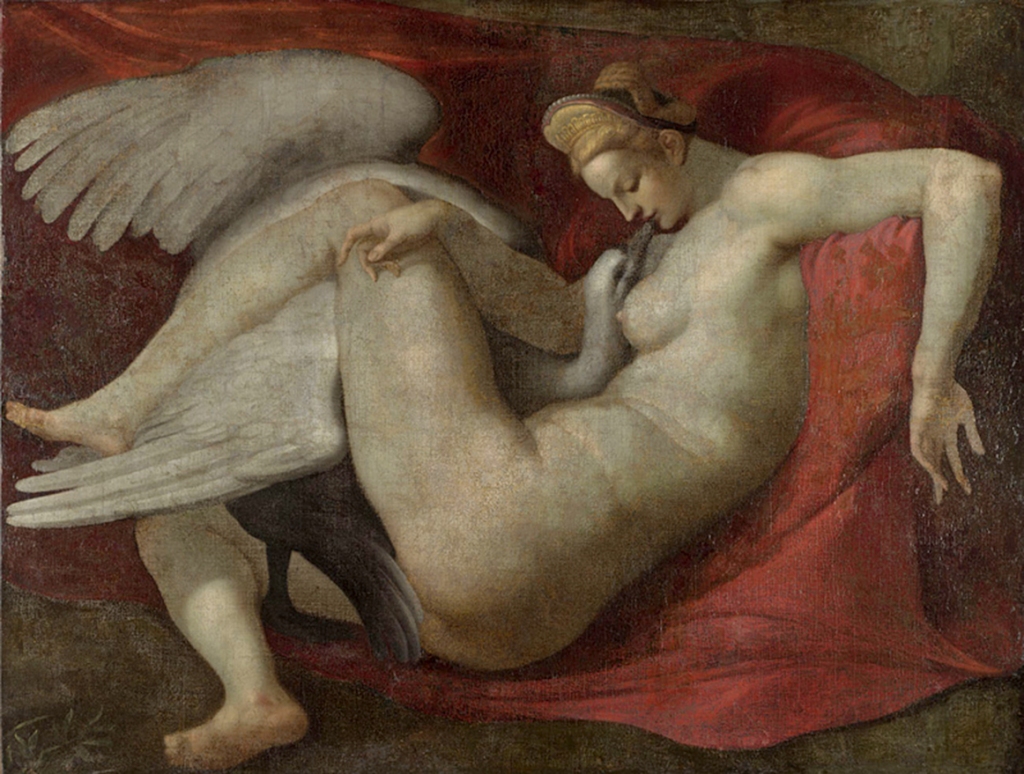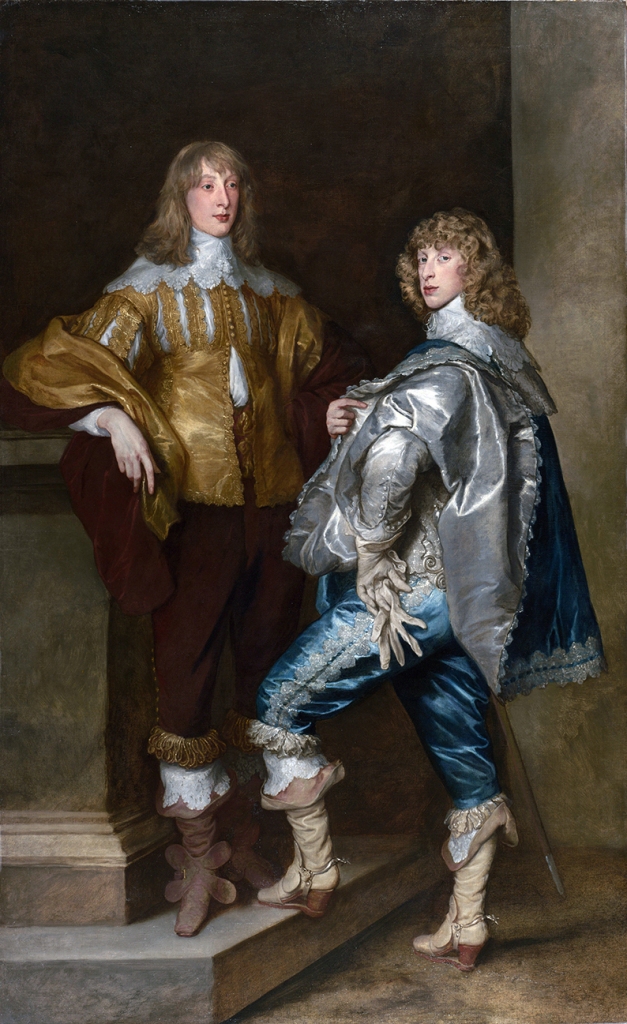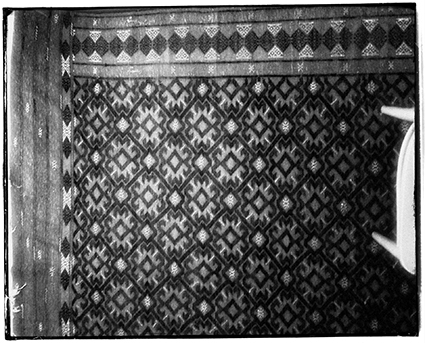Excuse me, ma’am. Is this arm yours?
After seeing works by Jean-Auguste Dominique Ingres (1780-1867) recently, in a virtual visit to the Louvre, my confusion about the painter flared up again: how is it possible that someone who is capable of painting fabrics and materials with such stunning precision, so messes with the human form?
The anatomy of the men he paints is always spot-on. (Except for the hands, but more on that another time.) The women though, are all over the place. His poor distorted Odalisques of course, but also many others – especially their arms spin mercilessly out of control. How is that possible? What is going on? What kind of man was that Ingres anyway?
He was an amazingly talented young man, who had a hard time choosing between the violin or the paintbrush for a career. Painting won, but he never gave up his music. In French, the expression “un violon d’Ingres” means a hobby performed at a (semi) professional level. That explains why Man Ray, the experimental photographer from the 1920’s, gave this photo that title – his high end hobby was the female body.

But I digress. Back to Ingres, who considered himself a truly classical painter, in the tradition of Nicolas Poussin and Jacques-Louis David. However, to our eyes his history and mythology paintings often seem camp and over the top. He is better remembered for his portraits, which he made primarily to earn a living – he rather looked down on portraiture.

Thetis, a sea nymph and mother of Achilles, throwing herself at mighty Jove (Zeus in Greek). It is as if she’s holding up a spare left arm. Her right arm is about the length of her leg, by the way. But look at the way he painted the fabric! Those draperies! That bas-relief! And – ugh, gross – the misshapen small toe of the Supreme Being.

Madame Marcotte seems to have an arm lying loose inside her dress. And what a dress it is, too! The collar leaves something to be desired, I’d have a word with the dressmaker on that, but the fabric is to die for. I have looked at this portrait endlessly with my photography students and we’ve come to the conclusion he must have had the dress in his studio – propped up on the sofa, without anybody inside it.

Ah, yes, those Odalisques. Naked girls in Eastern bath houses. Ingres painted them throughout his life, in exactly the same manner – with those stretched out backs and funny buttocks. I’ve read that he was ‘looking for ideal beauty’, and that his paintings were the ‘first steps towards abstraction’. But I can’t help thinking there’s something else going on. Could it be that he was afraid to look at women? His work is often classified as Erotica. Now I’m no expert on the male gaze, but I can hardly imagine that life-threateningly elongated spines turn men on.
Maybe the mere fact that they were naked was enough for the stuffy bourgeoisie of the time, maybe no one dared to look at nude women then. Or was Ingres simply more into men?
Ingres used models of course, possibly several within one painting, for various details. He also used a camera obscura, which contributed to the accuracy of the backgrounds and the precise rendition of the materials.

Still, I’m puzzled – did he not care? Were the anatomical glitches a hidden referral to his disdain for portraiture? Did he think we wouldn’t notice? Were such details considered unimportant? Or could it be that he really was experimenting with proportions after all?

And possibly Ingres studied this, a copy of a lost Michelangelo. No offence meant, but Leda here is an anatomical disaster. As if being violated by a swan isn’t bad enough! (Zeus, aka Jove, at it again.) One boob smack in the middle, an endlessly long body, ditto thighs . . . jeez.

Another Leda and the swan, painted this time by Paolo Veronese, 1585. Luckily her breasts are pretty much where they should be, but just look at those shoulders! And she has no hips. You know what? I think a guy modelled for this, and Veronese added a pair of boobs later. That swan looks a little rough around the edges by the way – you wouldn’t think there was a Deity hiding in there.

I guess Ingres could also have studied this portrait, by Antoni van Dijck, of the British Stuart brothers, 1638. I’ll say nothing about the expression on their snooty faces, nothing about their decadent hands (later, promise). No, it’s the arm. Again. What on earth is going on under that gorgeous blue-and-silver outfit? Between that arrogantly thrust out elbow and the shoulder? There’s something seriously wrong with that upper arm. And isn’t his body terribly long for his legs? Van Dijck must have had an off day, he usually gets his proportions just right. By the way, did you notice the guy’s boots? Very elegant, wedge/heel thingies. With both spurs pointing in the same direction. I dare say that’ll have precious little effect.

Proserpine, Dante Gabriel Rossetti, 1874. Ingres certainly cannot have seen this, he’d been dead for 7 years when this was painted. The model is Rossetti’s lover Jane Morris. She did have the most astonishingly striking looks, but that upper back is just weird. I read an article which drew a parallel between her bulging neck, the tragic story of Proserpine, and their complicated romance. AND Rossetti’s depressions. Actually it sort of makes sense, even though initially it sounds like ramblings. Her contorted neck, her twisted hands, subconsciously give you the feeling that things aren’t right.

And then there was André Kertesz (1894-1985). A Hungarian photographer who lived in New York most of his life, with a long stopover in Paris. There the (satirical, slightly risqué) magazine Le Sourire commisioned him to make ‘something’. He got hold of two funhouse mirrors, found models who were willing to get undressed, and shot close to two hundred pictures in a couple of months: Distortions (1933). He himself considered the result funny, and sometimes a little scary. It took him fourty years to get the book published.

Maybe all these artists were looking for the effects of a body in images, investigating to what extent you can mess with it before it loses its appeal – and what happens when you do cross that line. Who knows? I can definitely see the connection between Kertesz’ Distortions and Ingres’ Odalisques.
But loose arms? Men’s shoulders on female bodies? Still weird. Sorry.

Toch wel erg mooi, die Ingres! Liefs,Annigje
LikeLike